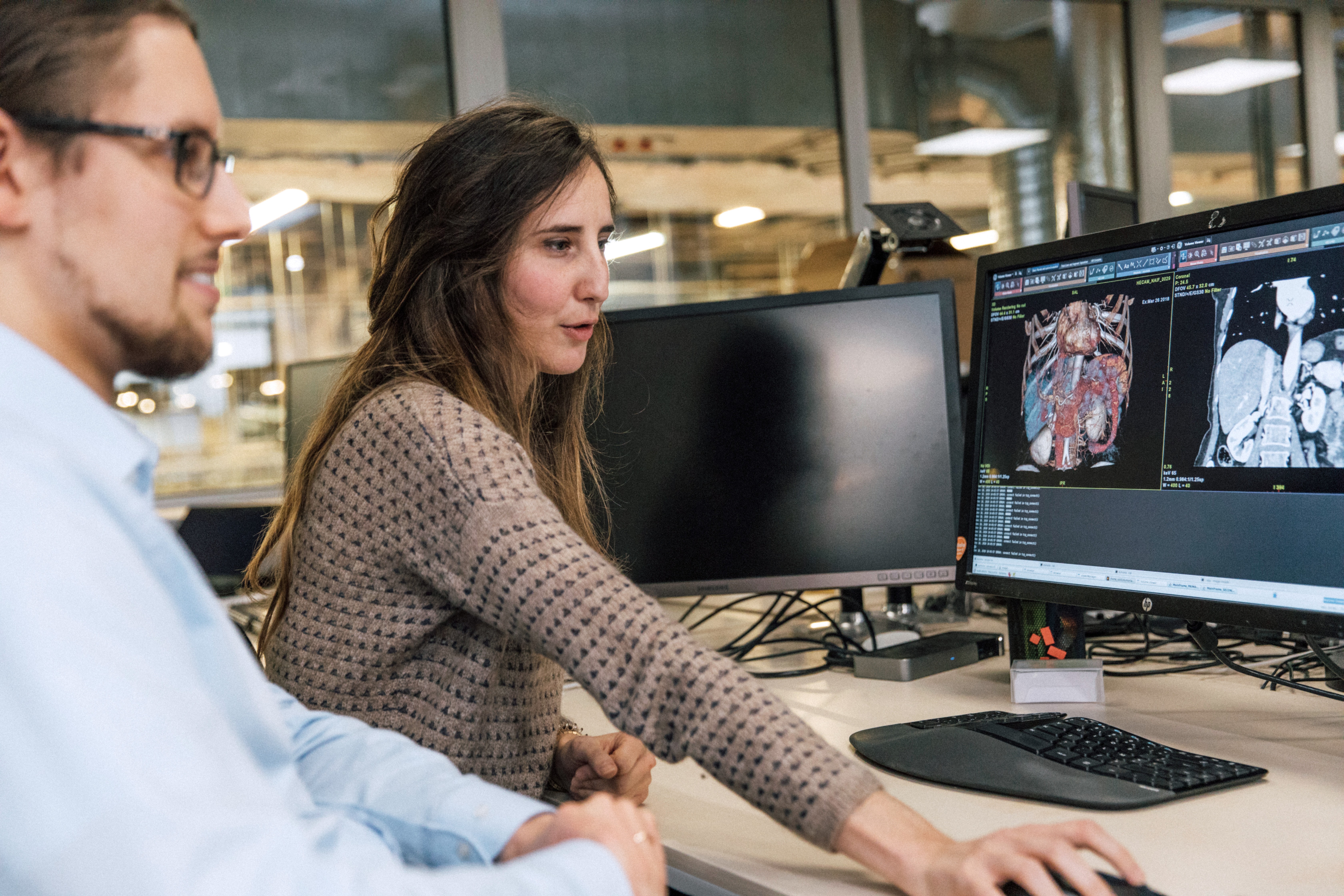Medical imaging has revolutionized the way physicians diagnose and treat a variety of medical conditions. Continuing to advance imaging capabilities, post-processing imaging applications, and advanced visualization platforms allow radiologists to extract more information from complex medical scans, aiding in providing more efficient and accurate identification of medical issues.
The vital role of advanced visualization in radiology
One of the primary benefits of image post-processing is the ability to enhance the details and clarity of medical images for further clinical insights. In addition, image post-processing solutions can help remove noise and artifacts that may obscure important details in the image, providing a clearer picture to aid in diagnosis and treatment planning.
Advanced visualization platforms expand medical imaging benefits, including enabling radiologists to further work with images to adjust images in 3D space, quantify user-defined lesions, segment anatomy, map vascular structures, and classify tissue. These techniques can provide a more complete picture of the anatomy and help radiologists better understand complex relationships between structures within the body. For example, 3D reconstructions can help clinicians with surgical planning and interventional radiology procedures.
These visualization techniques are most relevant in areas where complex medical imaging is commonly used, such as neurology, oncology, and cardiology. In these clinical areas, accurate and timely diagnosis and treatment planning can impact patient care; therefore, providing advanced visualization solutions to clinicians can help improve patient care.
"Globally we are seeing increased pressure on radiology departments due to rising case volumes and limited staff. This is inspiring us to innovate and create solutions that use AI to automate scan to read, including post processing workflow to produce ready to read images,” said Girish Muralidharan, SVP & GM, Advanced Visualization. “We believe that innovation comes from both within our organization and through collaboration with external partners. That's why we are constantly investing in cutting-edge technologies and integrated AI applications to deliver high-quality, automated solutions to our customers"
Improving medical diagnostics with innovative image visualization techniques
Advanced visualization techniques in medical imaging diagnostics continue to help improve patient care by providing more accurate diagnoses, reducing the need for additional testing, and guiding precise treatment planning.
Advanced visualization platforms can use complex algorithms to create detailed 3D reconstructions of the images of the body, allowing radiologists to view scans from any angle and at any level of detail. They can also be used to overlay different types of scans, such as computed tomography (CT) and magnetic resonance (MR) images, to create a more complete picture of the patient's condition.
Artificial intelligence (AI) algorithms are increasingly used to help clinicians increase productivity and efficiency in medical image analyses. Many AI algorithms are leveraged in advanced visualization applications that help in the diagnoses of diseases within neurology, oncology, cardiology, hepatology, and more.
Advanced visualization in oncology, cardiology and neurology
Accurate detection and characterization of tumors and tumor tissue is critical for treatment planning and monitoring. Advanced visualization techniques can help clinicians identify tumors at an earlier stage, including their size, location, and shape, and assess their response to treatment to optimize their effectiveness.
In cardiology, visualization techniques can help identify the location and extent of blockages in the arteries, guide interventional procedures, and assess the heart's function.
Advanced visualization—such as color visualization to assess vascular enhancement timing in stroke patients—can also provide sophisticated fused views of the brain. When “time is brain,” these applications can provide a comprehensive workflow solution for reviewing, processing, and distributing stroke images.
Radiologists tend to be the visual problem solvers for the healthcare system. They need a breadth of visualization tools at their fingertips to help answer a wide range of clinical questions. GE HealthCare’s AW Family has many applications, covering multiple modalities across care areas and sub-specialties with tools to visualize nearly every clinical challenge. GE HealthCare’s advanced visualization platform provides clinicians with access to proprietary clinical applications and innovative third-party clinical applications.
Flexible advanced visualization solutions unlock care delivery possibilities
As radiology becomes more integrated with the rest of the healthcare system, radiologists’ ability to access and utilize advanced visualization tools with greater flexibility is critical. By improving the speed and efficiency of these tools, radiology and other departments support the larger goal of health systems to become more interoperable and connected.
Providers can access and process imaging data remotely without requiring specialized hardware when using advanced visualization platform applications. This makes it easier for clinicians to access these powerful tools from anywhere*, at any time, and to collaborate with other providers.
The flexibility provided by advanced visualization platforms is particularly important in the context of remote healthcare. With the rise of telemedicine and other remote healthcare services, health providers need access to powerful tools that enable them to diagnose and treat patients without being physically present. Remote advanced imaging visualization platforms may provide clinicians the flexibility to deliver high-quality care, regardless of location.
Developing essential tools for the future of imaging diagnostics
Image post-processing and advanced visualization platforms continue to evolve and provide access to sophisticated solutions for radiologists across many clinical areas. GE HealthCare is committed to continuing to invest in developing these technologies, new applications, and AI tools to allow for more efficient and accurate diagnoses and improved patient care.
RELATED CONTENT
DISCLAIMER
Not all products or features are available in all geographies. Check with your local GE HealthCare representative for availability in your country.
*Wherever internet is available.

